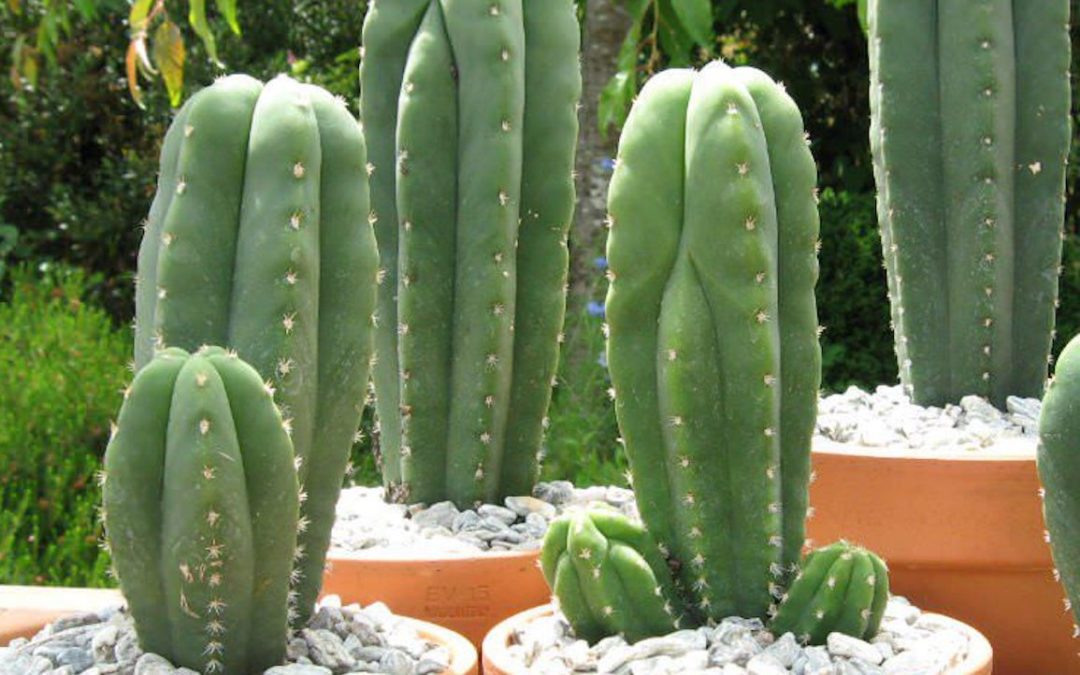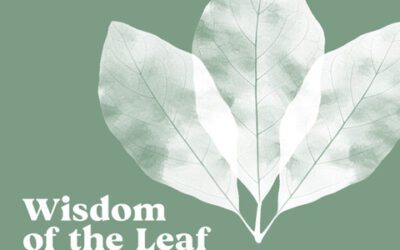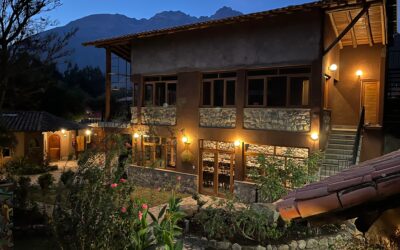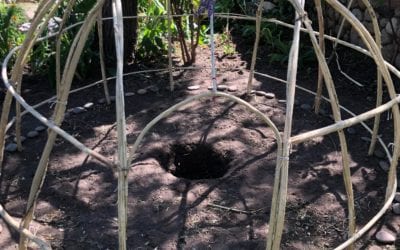Plant Medicine Handbook

Willka T’ika Ethos
Willka T’ika was created to honor Quechua culture and our center is a dedication to native traditions. We deeply respect Andean culture, history and cosmology and offer authentic, ancient Incan ceremonies. We feel strongly about offering what is unique about the Quechua culture and Sacred Valley and focus on practices, plants, and traditions native to the area. Plant medicine has become wildly popular with the rise of the psychedelic renaissance, and we are frequently asked related questions, so we’d like to clarify a few things here. Though we do offer plant medicines that are consistent with Andean culture, Willka T’ika is not primarily a plant medicine center. For some context on how our journey with Plant Medicine has evolved over the last 30 years, you watch this recent presentation.
What is Plant Medicine
Although there are many plants that can be used for medicinal purposes, in today’s world, plant medicine generally refers to the use of certain psychoactive plants/fungi that alter consciousness for the purpose of personal growth and transformation. The most common plants used in this context are the San Pedro Cactus (also known as Huachuma), psilocybin mushrooms, and Ayahuasca. Over the past decade, there has been a resurgence of research into the therapeutic potential of these mysterious plants with promising results. Research has shown these experiences reliably provide individuals with one of the most meaningful experiences of their life, provide enduring changes to altruistic values, can greatly ease end-of-life distress for cancer patients, and have shown promise in both alcoholism and smoking cessation.
How exactly these medicines work remains unclear. There is debate over whether the psychoactive components of the plant are the therapeutic agent, or if the experience they induce itself is the medicine. A widely held view in the field is that, analogous to our ability to heal a cut on our body, our minds have the ability to heal themselves, and these plants merely serve as catalysts for change. Particularly when it comes to San Pedro and Ayahuasca, many believe that the plants themselves have their own healing intelligence.
Plant medicine has been used by Andean and Amazonian cultures for thousands of years, and these cultures have a rich history and lineage of individuals, known as shamans, serving as shepherds of these medicines. Today we are at a unique point, where ancient wisdom and modern medicine are meeting, in hopes that the healing power of these plants can help millions around the world.
Andean Plants
There are a number of plant medicines used in the Sacred Valley that we outline here. As described below, San Pedro is the only one that we feel is in line with our ethos, and thus is the only one we offer.
San Pedro (Huachuma)
San Pedro is a cactus native to the Andes. In fact, we have many San Pedro Cactus’ growing in our gardens! The psychedelic compound that can be derived from this cactus is called mescaline and is considered to be one of the classic psychedelics. Fun fact: mescaline is the inspiration for Aldous Huxley’s famous book, The Doors of Perception. San Pedro ceremonies offer a powerful, yet relatively gentle, experience, and can serve as an excellent foray into the world of plant medicine. We feel comfortable offering San Pedro at Willka T’ika because it is in line with our culture and ethos and offers a more predictable experience than other plant medicines offered in the surrounding area. If you’d like to experience a San Pedro ceremony, you can do so as part of the Essential Wellness program.
Ayahuasca
Although we have enormous respect for Ayahuasca, we have decided to not offer it at Willka T’ika for several reasons. First, Ayahuasca is originally from the Amazon and is not native to the Sacred Valley. We believe this medicine is best consumed where it naturally comes from. Second, it is a particularly powerful plant and can be dangerous if not handled with the right precautions. There needs to be careful medical screening and even a particular diet (dieta) is generally followed to avoid undesired interactions. If not handled properly, there can be severe consequences. There have been reports of fatalities, and people can experience enduring mental distress as well. We are of the mindset that if someone is going to offer Ayahuasca, this needs to be a primary focus of the center so that it can be given the attention and respect it deserves. For more of our views on Ayahuasca, see this blog post.
Kambo
Kambo is not technically a plant medicine, though is often in combination with plant medicine ceremonies. Kambo comes from the secretions of the giant leaf frog, native to the Amazon. Kambo is administered via a series of burns on the skin, and often leads to deep purging over the course of the next thirty minutes to an hour. It is used both for its therapeutic properties and as a way to prepare individuals for further plant medicine ceremonies.
Rapé
Rapé (rah-peh) is primarily made from an Amazonian tobacco, mapacho. It is ingested by first grinding the tobacco into a fine powder and then blowing it through the nostrils using a ceremonial pipe. It is considered to be a ‘cleansing’ experience and is often used to help prepare an individual for an Ayahuasca or San Pedro ceremony.
Bufo
Bufo is named after the Bufo Alvarious toad, aka the Sonoran Desert Toad, which is native to northern Mexico and the southwestern United States. It is also simply referred to as ‘the toad’ (or Sapo). A very powerful psychoactive compound can be extracted from the glands of this toad, called 5-MEO-DMT (similar to DMT, which is the psychoactive component found in Ayahuasca). 5-MEO-DMT provides a short, (20min) intense experience that can occasion a mystical experience, where an individual loses their sense of being a separate ‘self’ and seems to merge with the universe.
What to expect from a San Pedro ceremony
Preparation
San Pedro works best on an empty stomach, so plan to skip breakfast the morning of. Unlike Ayahuasca, there is no rigorous diet needed to follow in preparation for the ceremony although we recommend avoiding meat, processed sugars, and certainly alcohol in the days prior to a ceremony.
What should I bring?
Part of the ceremony will take place indoors, and part will be in our beautiful gardens. Be sure to bring sunblock, layered clothing, water. Light snacks will be provided (fresh fruit is particularly fantastic with San Pedro!).
Set and Setting
There are two things that greatly impact a plant medicine experience, your mindset coming into the experience, and the physical setting you will be in (known as set and setting). The physical setting will be our beautiful resort, so no need to do anything there, but the mindset is something you can prepare for. In addition to setting an intention (described below), come into the experience with excitement and optimism. You’re embarking on an epic journey and we find Joseph Campbell’s Hero’s Journey‘s framework particularly useful and relevant.
Intention
A key part of the process is to have a sense for what you’d like to get out of the experience. There may be a question in your life that you’re grappling with, a belief you’d like to adopt or let go of, or there may be a feeling you’d like to invite more of into your life. It can be something as general as ‘I’d like to feel more connected to nature.’ These medicines have a mysterious power to help us get what we need (moreso than what we want). However, it is also important to hold this intention lightly. For most people, the experience is not quite what they were expecting. They may ultimately get what they wanted, but it may manifest itself down the road in a more indirect manner. Although it’s important to be clear on this intention, let go of it once the ceremony stops. It’s essential to be open to whatever arises and not have expectations for how you want things to go.
Ceremony
San Pedro is a full-day activity. The effects can last 12 hours or more, so we start fairly early in the morning (ideally 7am).
Is there anything I should keep in mind during the experience?
The most important thing to keep in mind is to trust the process. Trust, let go, be open is a common mantra in the plant medicine world. Trust that whatever’s unfolding is beneficial. Let go of the need to try to control your experience. Let go of any expectations for what you want to happen or think should be happening. Be open to whatever is arising and engage with it. If you’re able to surrender to the experience, you’ll open yourself to the magic within. Practicing mindfulness and deep breaths can also be highly beneficial. When in doubt, breath deeply and pay attention.
What should I expect to feel?
It’s impossible to say what you will experience during the ceremony, and be careful of anyone who tells you otherwise! However, there are certain themes that seem to appear frequently. You may feel an extra sense of connection; to yourself, to others, to the natural world. The surrounding flowers, trees, mountains, and wildlife may be especially beautiful. You may feel emotions deeply. You may get insights into the various dynamics of your life. You may get clarity on how you feel about relationships, choices, and on what matters to you. It can also at times be a challenging experience, and you may feel fear, frustration, and confusion. You can rest assured that you will be totally ok, and will almost certainly grow meaningfully from the experience.
Anything else I should know?
There is a common misconception in the field about having a ‘bad’ trip. While taking plant medicine in a reckless environment (e.g. in public, around traffic), can certainly lead to a bad experience, when done in this setting, the chances of having a truly bad experience are very low. What’s important to keep in mind is that you may have a challenging experience, but that is not bad. A challenging experience, where you feel fear, remember painful memories, or wrestle with difficult decisions, might be unpleasant, but it also might be exactly what you need. You may spend hours crying, but often times these are the people who get the most out of the experience. Remember, this is an experience primarily about growth.
Integration
There is a widely held belief among practitioners when it comes to plant medicine: what you do with the experience is just as important, if not more so, than the experience itself. You may get a glimpse into what’s driving destructive behaviors, a felt sense of connection to something greater than yourself, or a glimpse into what life could feel like without your ego so strongly in charge, but if you do not change your behavior in any way, these insights will likely fade quickly. “Broadly, integration is the exploring, nurturing, processing, and ultimately, embodying of insights had during and after the psychedelic experience. Integration requires action. It is crucial to put insights from the experience into action in daily living.” How to properly ‘integrate’ a psychedelic experience is an active area of study, and almost certainly varies from person to person. Although the ‘best’ way to integrate an experience is unclear, there are certain practices that many people find beneficial:
Meditation: There is a curious link between meditation and plant medicine. They can induce similar states of mind, and even quiet down the same parts of the brain. People seem to intuit that meditation can help sustain the insights gleaned during a plant medicine experience, and it is fairly common for someone to begin a meditation practice after an experience.
Therapy: In virtually all of the modern research studies, what’s being studied is ‘psychedelic-assisted therapy,’ i.e. the psychedelic experiences serve as a catalyst to aid in the psychotherapeutic process. If you have the means to work with a therapist, this can certainly be a prime time to do so.
Yoga: Yoga can provide an opportunity to not only reconnect with our bodies but also a sense of spirituality, for those inclined. A plant medicine experience can provide a glimpse into a more visceral connection to the needs of our bodies, and yoga can offer an opportunity to express this form of self-love.
Habit change: During a plant medicine experience, you may gain insight into why you are engaging in the behaviors that you are and this can often lead to establishing a more healthy relationship with them. Research has shown promise in using plant medicines to help treat substance use disorders. This can be a great time to reflect on what habits you’d like to stop or start, and leverage this special window to help make those changes.
Community: Healing happens in community. Plant medicine experiences often allow us to feel more connected to one another and allow us to access deeply held emotions. Expressing this among the safety of others can be both bonding and healing. You may be able to find a local integration circle if looking for a safe space to do so.
Journaling: Taking time to write about your experience and what it means in the context of your life can be enormously beneficial. These experiences are frequently one of the most meaningful experiences of someone’s life, and journaling can help weave this meaning into a life story. This is one of the main tools Johns Hopkins uses to help their participants integrate their experiences. Using this opportunity to reflect on our life’s narrative can be deeply therapeutic in and of itself.
Nature Connection: People often report feeling highly connected to nature during a plant medicine experience. They may feel a sense of awe and wonder simply by looking at a plant, and this newfound appreciation for the natural world can continue after the journey is over. By spending time in nature afterward, we can help cultivate this feeling and make it more a part of who we are.
We are fortunate that Willka T’ika offers an incredible environment to engage in many of these practices and are exploring how we can best aid those looking to integrate their plant medicine experiences.
Frequently asked questions
Q: Can I participate in a San Pedro Ceremony?
We currently only offer San Pedro (Huachuma) Ceremonies on our 7 day Essential Wellness Retreat, as part of the “3rd Eye” ceremony on Day 6. This gives us 5 full days to help you prepare for this powerful ceremony. If you are interested in joining one of our Essential Wellness Retreats, they are hosted every two months and you can find more details here. Regrettably, it is not possible to join the ceremony without first doing the full program and preparation.
Q: I’ve booked a few nights at Willka T’ika and would love to do a ceremony in your gardens.
For the safety of all our guests as well as to protect the sacred energy of Willka T’ika, only plant medicine ceremonies led by our staff and partners are allowed at Willka Tika. If you would like to lead your own ceremony, we kindly ask that you find another location for your ceremony. This applies to any entheogens including Ayahuasca, San Pedro, Psilocybin, Kambo, DMT, etc. We are happy to allow leaders to lead non-psychoactive plant ceremonies at Willka T’ika (such as Cacao). We also work very closely with the sacred coca leaf and offer traditional K’intu blessings and despachos with our Q’ero shaman (or Pakko).
Q: Great. So can I lead my own Cacao ceremony?
Probably. We’ll still need to chat about how you want to prepare the cacao, where you plan to serve it, and what the ceremony will entail. On our Essential Wellness Programs, we offer a Cacao ceremony on Day 4 of our 7 Day Retreat as a wonderful heart-opening experience that helps prepare our guests for the San Pedro ceremony on Day 6.
Q: I know an amazing Shaman. Can he/she come to Willka T’ika and lead my group’s ceremony?
We’d love to meet your shaman and perhaps work with him/her someday. However, building a professional relationship takes years. We can only allow shamans to lead a ceremony at Willka Tika if we’ve worked with them extensively.
Q: I’ve been called to Peru to study plants and to learn from their wisdom. How can I follow that calling?
We have tremendous respect for the teachings of master plants and encourage you to approach your studies with discipline and humility. As we mentioned in our blog, there is a lot of groundwork to be done when setting on this path and we believe that to do this work properly, one must be fully committed. Since 1995, Willka T’ika has been a wellness center focusing on Andean cosmology, not plant medicine. Our calling has been about cultivating mindfulness, honoring Pachamama and sharing the ancient wisdom of the Quechua people in the Sacred Valley. As most master plants come from other regions of Peru, we encourage our guests to go to the original source of these plants and connect with them there. We believe that working with plants is indeed a calling and only those who are fully committed to it, should be leading ceremonies.
Mindfulness while at Willka T’ika
As mentioned above, Willka T’ika is not primarily a plant medicine center. Accordingly, the majority of guests are here to experience the other wonders of our center and may not be interested in plant medicine. If you recently came from an Ayahuasca center, we understand that your experience may have been deeply meaningful and you are excited to share it. These stories can be profound and have a tendency to dominate the conversation. We are of course thrilled that you had such a wonderful experience and love that you can have an opportunity to share it, but please be mindful that not all guests may want to hear about your experience.
Recommendations
Through our many years in the Sacred Valley, we have had the pleasure of working with some wonderful plant medicine practitioners. The two centers we can happily endorse for San Pedro ceremonies are Hummingbird (located in Pisaq) and Ubuntu Ayni (located in Huaran). And of course, our resident shaman at Samadi Healing. We do not offer formal recommendations when it comes to Ayahuasca centers for reasons discussed in this blog, although we our best to share updated information with guests once they arrive at Willka T’ika.
Further reading
Arguably one of the most popular books in this domain is Michael Pollan’s How to Change your Mind, which significantly helped launch psychedelic therapy into the public (recently adopted into a popular Netflix docu-series). A more recent book by Pollan, This is Your Mind on Plants, is also an informative read. For those eager to learn more, this is a great resource list.





Recent Comments